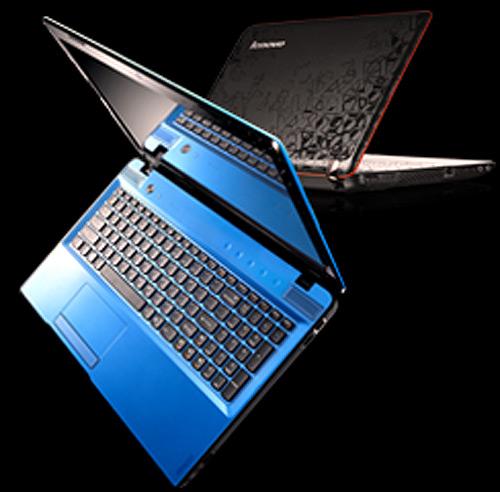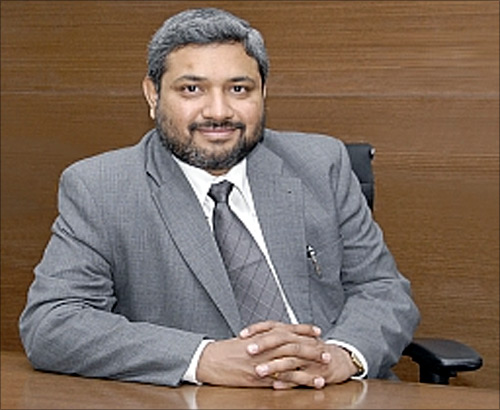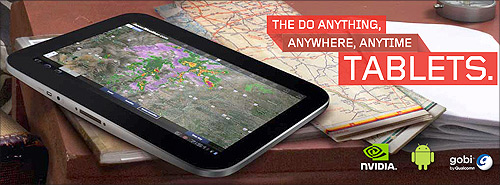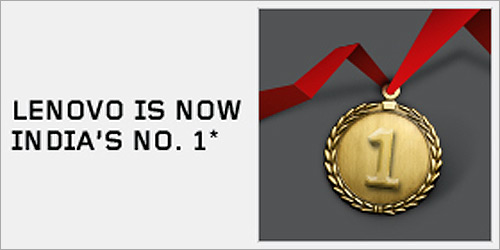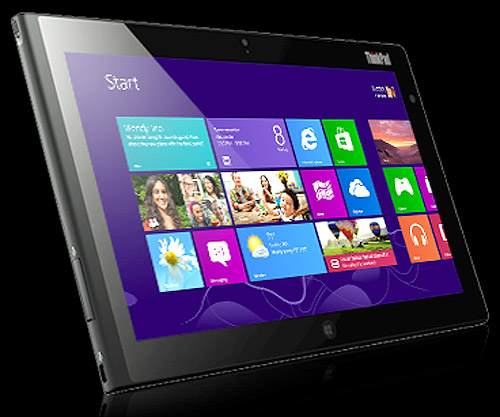 | « Back to article | Print this article |
How Lenovo conquered the Indian PC market
In the first quarter of 2009, Lenovo's market share in India was just 4.8 per cent.
In just three years, the Chinese computer maker has managed to climb close to 12 percentage points and, with a 16.6 per cent market share, become the leader of the personal computer market in India.
Trailing Lenovo, is Acer with 13.4 per cent, HP with 13.1 per cent and Dell with 12.9 per cent, in a hotly contested race for PC dominance. How Lenovo did this is a lesson in ingenuity, learning and discipline that other firms could learn from.
Click NEXT to read more...
How Lenovo conquered the Indian PC market
The man behind the magic is Amar Babu, managing director of Lenovo India since November 2007.
The company decided early on that the best way to enter a new and critical market was to learn from its experiences in another one of a similar size - specifically, its homeground, China.
"It was never forced by the management. They only said that when China was at the stage where India is now, we did the following things, and hence, we had certain results. But, the China PC market is a different animal altogether. Hence, we tweaked some of the approaches for India," says Babu.
Click NEXT to read more...
How Lenovo conquered the Indian PC market
Orchestrating this strategy meant top management needing to make several trips to China, as well as deputising colleagues from China to manage the initial phase of restructuring in India.
Globally, Lenovo has a strategy called 'protect and attack' - meaning safeguard categories where it is doing well and increase its thrust into emerging opportunities.
It took a similar approach in India. "For the India region, the enterprise business came under our 'protect' strategy.
Lenovo was number three with a market share of 14-15 per cent. At the same time, we decided to invest in growing our reach in the SME (small and medium enterprise) and consumer segment. Within the two, we chose the consumer segment first, as it was growing faster," said Babu.
Click NEXT to read more...
How Lenovo conquered the Indian PC market
Go exclusive
Lenovo's bolder strategy was how it chose to interface with its customer.
Apart from forging partnerships with large-format retail outlets, multi-brand-format store, and regional distributors, Lenovo decided it would also invest in exclusive stores, which was a riskier gambit.
"We took a leap of faith in case of regional partners. Though regional distributors were not exclusive to us, we decided to be exclusive with a few. And, we said that Lenovo will become a larger share of their business over time. We also invested in Lenovo exclusive stores (LES)," says Babu.
Click NEXT to read more...
How Lenovo conquered the Indian PC market
In China, LES count to about 12,000. This is the only format of stores that the company has in China. Now, this works in China because volumes in each city can sustain the cost incurred in setting up each store. But, Babu realised that this would not be the case in India.
Instead, the company devised the Lenovo Exclusive Store-Light for India. "By creating this segment, we were going against the grain. We also had to make sure that our relationship with the multi-format vendor was also in good shape," said Babu.
From 150 exclusive retail stores two years ago, Lenovo now has 1,000 such stores and access to 650 cities. The majority of these is in tier-II and III cities. "These stores gave us the desired reach into India and today, these stores are growing faster than the multi-brand format," says Babu.
Click NEXT to read more...
How Lenovo conquered the Indian PC market
Another area where the China learning experiment helped was in managing its Indian supply chain.
In 2008 and 2009, Lenovo was, on an average, a month to a month-and-a-half behind technology transition. To start with, it reduced the inventory with channels, on its own book and in its warehouse.
"Earlier, we used to get products shipped via air. Now, we plan for product launches at least a month or two in advance and then try to ship the products via sea (keeping only the urgent shipments for air mail)," explains Babu. Today, this exercise has meant that Lenovo is among the first to transition to any new technology.
Click NEXT to read more...
How Lenovo conquered the Indian PC market
Impact
In addition to grabbing 11.8 percentage points in just three years, Lenovo has boosted its enterprise business from 14 per cent to 32.5 per cent in the same timeframe.
In the consumer segment, despite the company being a laggard to players like Dell, Acer, Sony and HP, its market share has jumped to 11.6 per cent from 6.3 per cent in the first quarter of FY11.
The SME segment share has moved to 7.3 per cent compared to 2.4 per cent in the first quarter of 2011.
Click NEXT to read more...
How Lenovo conquered the Indian PC market
Vishal Tripathi, principal research analyst at Gartner, feels that Lenovo has been growing consistently, though it needs to add a compelling product line in their consumer segment just like it has done with Think for the enterprise.
"For some time, Lenovo was struggling to replicate the success of Enterprise in the consumer segment, but that's gradually changing. Lenovo is constantly growing in this category on the back of channel expansion by adding franchisees, post-sales service network, and retail outlets."
In fact, Tripathi says that one of the significant changes that have propelled the PC maker to the number one position has been its expansion in the consumer segment. "But, a similar success is yet to be seen in the SME segment," he says.
Click NEXT to read more...
How Lenovo conquered the Indian PC market
Sustaining momentum
Yet, some say that Lenovo's numbers look better than they should because of mass orders like the one they received from the Tamil Nadu government for 300,000 laptops.
"If you see our growth chart over the last five to six quarters, we have been growing consistently, we have not had a patchy growth. Even before the government deal, we were number two in the India market," says Babu in response. "I will not like to do something which I cannot do on a regular basis, as it is not profitable," he adds.
Babu also says that going ahead, such large government deals could well become the norm.
Click NEXT to read more...
How Lenovo conquered the Indian PC market
After the Tamil Nadu government, the UP government has come out with one of the largest such contracts till date, with a demand for 1.8 million laptops.
For the year ahead, Babu is focusing on margins, increasing penetration in the SME segment and hoping that he will be able to sustain the growth that he has seen over the last few quarters.
"We have been the leader for the last two quarters, and our aspiration is to sustain our position. If I look at a three-five-year time horizon, we are invested to be a leader here. If we can be a leader in China and Japan, there is no reason why we cannot be so in India, especially in the medium term," says Babu.
Click NEXT to read more...
How Lenovo conquered the Indian PC market
Here come its smartphones
However, in the long-term, Babu has his sights on one other category. He says that the company will not just stick to selling PCs.
Lenovo is already the second-largest mobile seller in China and, Babu says, it is only logical that the next set of Lenovo launches here would be in the smartphone category. However, he declined to share any specifics about the launch.
Globally, Lenovo started a branding campaign called 'Lenovo: For those who do.' In India, they have appointed Ranbir Kapoor as the brand ambassador. In an internal survey done recently, Babu was amazed at the response the brand has had.
Click NEXT to read more...
How Lenovo conquered the Indian PC market
"Lenovo as a brand was always known in India, especially, after our association with KBC (TV show Kaun Banega Crorepati). Rather Lenovo's brand presence outside of China has been the highest in India. But, this was not translating into preference or consideration to buy. Over the last two years, the consideration score has moved up by 45-47 per cent. So, people knew us, but now, they are also considering us. That is resulting in sales," said Babu.
This is bleak news for the company's competitors who are struggling to increase sales in a tepid PC market.
